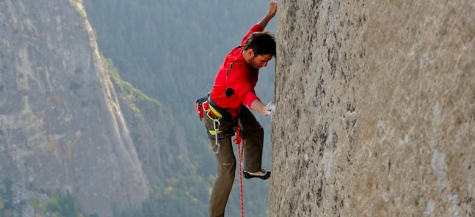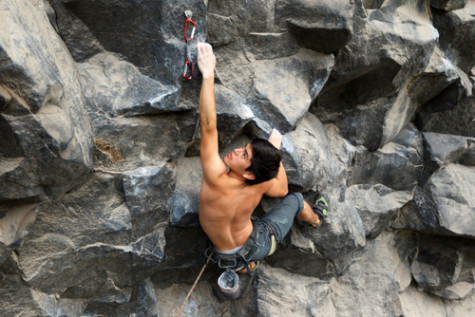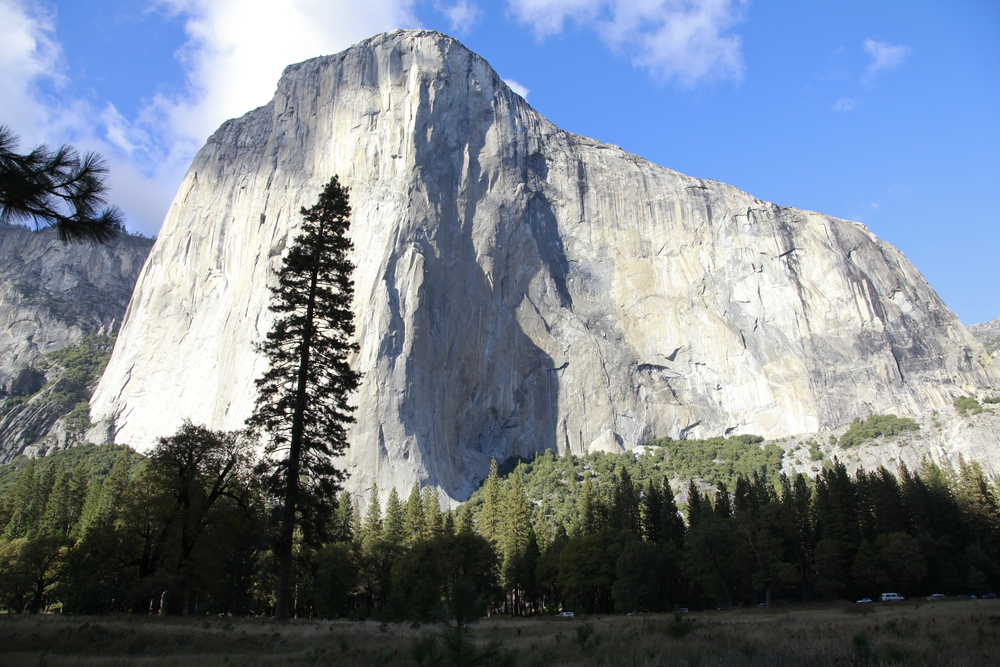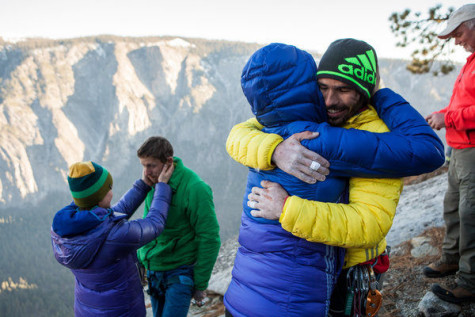On Wednesday, at 3:25 Pacific Standard Time, two scruffy, skinny men embraced atop Yosemite’s El Capitan. To the casual observer, just a couple dudes in a national park trying to get off the mountain before sunset. Yet, these men had accomplished something so amazing that the sitting US president would call and congratulate them. So difficult that people thousands of miles away would have to re-evaluate what is possible. And so impressive that that at least one writer is considering adding it to his list of the greatest sports acheivements of all time.
For non-climbers, let me break down what happened. People climb El Cap all the time. I’ve done it, paraplegics have done it, even Ozzy Osbourne’s kid did it. When mortals like us climb it, they stick equipment in the wall and step on that equipment. You might call that cheating, we call it “aid” climbing. To use only your hands and feet (with a rope to catch your fall as we saw last week) is called “free” climbing (no to be confused with climbing ropeless, which most people call “kinda crazy”). Thus, poetically enough, when someone climbs an aid route without cheating, he/she has “freed” it.

Now, I was an okay climber in my day, but nothing special. When I aid climbed a shorter, easier route on El Cap it took us five days and nearly broke me. It’s just impossible to describe how goddamn big the thing is. Two days we went without even seeing a ledge we could stand on. The Dawn Wall is twice as long and far harder aid climbing. But these men weren’t aiding, they were freeing. Using their fingertips and toes – that’s it.
Climbers use a linear scale from 0-15 to rate a climb’s difficulty. The hardest I ever climbed was 12 (by a series of total flukes). If you can climb a 14 – usually a hundred feet or so off the ground with friends watching with a bottle of vodka and the promise of a nice meal when it’s done – you are likely a professional climber. It’s a big deal. Even under ideal conditions, a single level 14 climb can make a career.
The Dawn Wall, meanwhile, has seven 14s.

Tommy Caldwell, who spearheaded this mad venture, is one of the world’s best climbers – eons ahead of even the greats. He’s free-climbed almost every available route on El Cap, including the Nose, which has only allowed four free ascents. He’s established new routes in Patagonia, where massive rock has the added bonus of constant snowstorm. Closer to the ground, he’s climbed a 15, which just a few years ago would have been like saying he mud-wrestled a unicorn, since 15 didn’t exist. His partner, Kevin Jorgenson, is younger and one of the leading talents in the sport.
Over 19 brutal days, climbing at night in frigid conditions thousands of feet off the ground, with the skin on their fingers rubbed to nothing, these two skinny guys combined the greatest big rock climbing with the greatest difficult rock climbing. Caldwell trained for eight years to do it – examining every section – and yet had never completed three of the seven sections of 14 until now (just as amazing – Jorgenson had almost no experience on the route). It’s kinda like fighting seven heavyweights in a row, three of them undefeated. It’s probably the hardest thing that has ever been climbed and will remain so for quite some time.
 It reminded me of a headline I saw a few years ago that read, “Is Tiger Woods the World’s Greatest Athlete?” My immediate answer was, “No. No, the world’s greatest athlete is not a golfer.”
It reminded me of a headline I saw a few years ago that read, “Is Tiger Woods the World’s Greatest Athlete?” My immediate answer was, “No. No, the world’s greatest athlete is not a golfer.”
Of course no one can answer the question, “who is the world’s greatest athlete?” We probably can’t even establish which sport he/she plays. But it is a fun conversation to have, especially in light of the mind-boggling achievement we saw this week.
The world’s greatest athlete would combine mental precision, strength and dexterity to a level that stuns normal humans. And in my opinion, there’s an element of variability in it – an ability to do more than one thing – along with overpowering passion. Decathletes, ballet dancers, basketball players – that’s where you look for the world’s greatest athlete. And climbers.
In ancient Greece, athletics grew out of warfare – a way to blow off steam between battles and establish primacy among the troops (so maybe we should add Navy SEALs to the list). But there is also something fundamental about it. Scientists say that play behavior is a crucial part of how we evolved and shapes our view of the world (if you haven’t seen the recent New Yorker story on the Kidzania phenomenon, don’t miss it). As I have written, for me, rock climbing as a young man allowed me to concentrate in school.
But when athletics reach a certain level, they transcend developmental psychology or warfare preparation. The Greeks knew this and placed great athletes on a level with the gods. We felt it when Hillary and Norgay climbed Everest, Ederle swam the English Channel, and Bannister ran the four-minute-mile. We saw it in Jesse Owens, Michael Jordan, and Jackie Joyner-Kersee. And I, for one, saw it on Wednesday.
Photo Credit: Shutterstock, Twitter, the Huffington Post, and Peter Stevens
Special thanks to Ian Walters


Update on free ascents of the Nose: Dutch climber Jorg Verhoeven free-climbed the Nose in November 2014, Climbing mag reported, bringing the total to four (or five) who have freed that route.
It’s worth noting that Lynn Hill made the first free ascent in 1993, and came back a year later and completed the first one-day free ascent. Her singular achievement was not matched for more than a decade. The next widely recognized free ascent wasn’t until 2005 when Tommy Caldwell and Beth Rodden did it swinging leads. Then Caldwell came back and led every pitch to complete the second one-day all-free ascent. (A climber named Scott Burke free climbed the Nose in 1998 but he top-roped one of the crux pitches and so doesn’t always get credit for a free ascent).
It was such a special event and I was spellbound by what they were doing while rooting them on from behind my iPhone screen. Thanks for taking the time to give your perspective on just how difficult this achievement was. Cheers!
Jorg Verhoeven? Never heard of him. This is what happens when one gets old and fat and stops following climbing in order to write about fish. Correction made. And as for Lynn Hill, sigh, I worshipped her for a good chunk of my teen years. She’s amazing, as you can see: 66https://www.youtube.com/watch?v=yS63AdRSnl8
We saw it when Hillary and Norgay climbed Everest.
Thanks Brian. I should know better than that. Just like climbing, I tend to hurry towards the end.